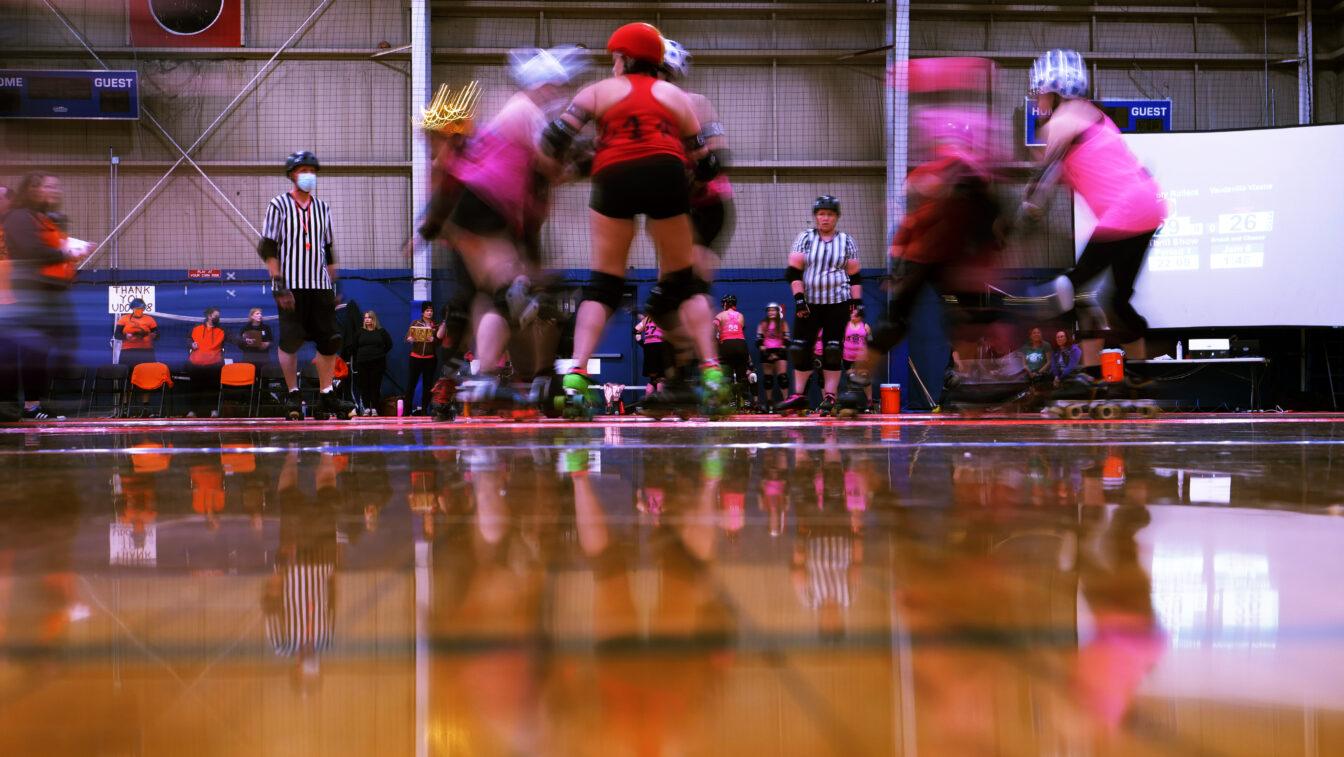The Madison Roller Derby returned to the track the night of Dec. 10 as hundreds flocked to the Keva Sports Center in Middleton. This marked the first Madison Roller Derby since 2020 when COVID-19 indefinitely suspended one of the nation’s first roller derby leagues.
Right off of the exit for highway twelve, the Keva Sports Center is mostly unassuming, a product of suburban sprawl. But a line of cars overflows from its stuffed parking lot. The cars belong to an eclectic crowd there for a shared interest in both the carnage and camaraderie of the derby.
Roller derby originated in the late fifties as a lace and blood female-dominated mirror of modern professional wrestling. As a precursor to early female sports leagues, roller derby was one of the first professional sports to pay women not only an equal wage but one that outpaced that of men performing in the sport. Despite this relative progress as derby rolled into the ’70s, it slowly atrophied and died off. That is until the early 2000s, when a new kind of flat track derby was born, sprouting in Texas and followed closely by Madison in the north.
Today leagues like the Madison Roller Derby are member-owned and operated, meaning both dues and reviews from the Derby fund them.
While competitions are profoundly competitive and often violent, a blatant element of personal expression echoes above the screeching of skates and clattering of elbow pads on the hardwood. Competing mascots rile up the fans, with middle-aged fans dressed in skirts and spandex put on skits for the children. As bouts start, each team member is introduced by their derby name, names like “Karma Suture,” “One Hit Wanda” and “Slam Chawdah.” The makeup and dress vary widely, from oversized shirts and bright fish nets to athletic shorts and crop tops.
Katilin Quillin, or Quilla Deville as she is known in the ring, is a derby veteran who moved to Madison and immediately went to the roller derby community, who welcomed her with open arms.
“It is a place where you can fit in how you want, so if you want to be on skates, off of skates, we welcome you,” Quillin said. “If you are trying to go really hard and be on the competitive team, you can go that route, or if you’re just trying to skate with eight wheels on your body, you can go that route.”
The competition can be brutal, with players getting more out of control as the game progresses. This often leads to jarring collisions that send smaller rollers flying off the floor. This was the case Saturday night as roller Hawaii KO, standing barely five feet in skates, stood rattled and alone against an opposing team’s attack due to penalties.
Fans chanted for KO, knowing doubtless collision awaited. Coming as no surprise to the spectators, KO careened into the floor. She stayed there for a moment, only to be picked up by an opposing player, after which a nod and a slight hug were shared. New to the experience of attending a roller derby, this moment acted as an epitaph. Ultimately, derby is a sport that brings together a spectrum of races, genders and classes to enjoy the show and encourage friendly competition.


